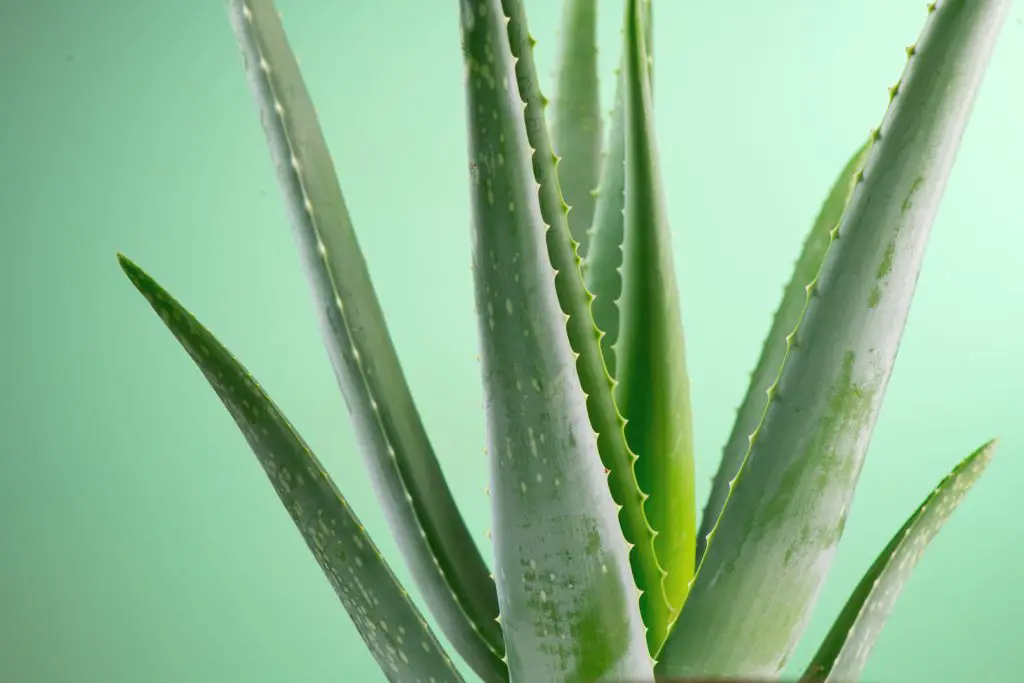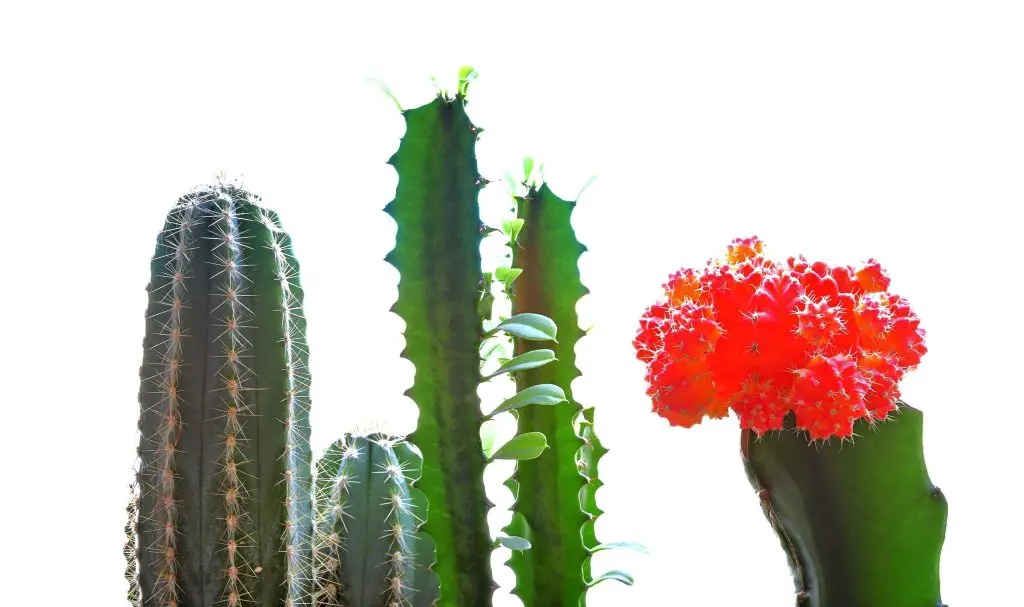Most people know what a cactus is, and most people know what aloe vera is. And yet, most people don’t know whether or not aloe vera is actually a cactus. After all, it looks somewhat like a few different cactus breeds, and it has little point spines too. So, is aloe vera cactus?
If this question has been eating you alive, have no fear. In this article, we’ll not only answer whether or not aloe vera is a cactus, but we’ll also provide all the information you need to understand why it is or isn’t. So, sit back and prepare to learn some interesting trivia for your next get-together.
If you just have some quick questions about aloe vera, scroll to the bottom for our FAQ, which contains some of the most commonly asked questions about the plant.

What is Aloe Vera?
Officially, aloe vera is a succulent plant. Succulent is a very broad umbrella term for a certain general type of plant, similar to the word “tree” or “flower.” There are many different trees out there, with some being quite different from their kin, but they all fall under the designation of “tree.” In the same way, several different plants are considered succulents.
Aloe vera is just one of those plants. But what exactly defines a succulent? Well, this word describes any plant that has adapted to low-water environments by developing water-storing tissue, which leads to particularly “fleshy” leaves, stems, or roots. Succulents can absorb and store water, which is what makes them plump and swollen.
If you’ve ever touched an aloe vera plant, you probably know very well how different it feels compared to other plants, like bushes, flowers, or grass. If you’ve ever snapped one of the leaves off, you’ve no doubt seen how infused the inner body is with liquid. It’s all thanks to the special tissue that stores water.
Moreover, those tissues are the separation point between succulents and other plant types. All plants consume water, but only succulents can actively store water to be consumed at a later date, like a squirrel hiding nuts for the winter, or a person storing food in their refrigerator.
Is Aloe Vera a Cactus?
So, we’ve established that aloe vera is a type of succulent. Perhaps you already knew this, but cacti are also a type of succulent, though cactus is a whole subcategory in and of itself. There is an entire family of “aloe” plants, but aloe vera is one particular species of aloe. Cactus, on the other hand, refers to an entire family of plants.
That being said, one could be forgiven for assuming that aloe vera is just a peculiar breed of cactus since most people don’t even know there are other types of aloe plants. But the truth is, aloe vera and cacti are not related in any way other than both being succulents. That’s right, aloe vera is not a cactus, even though it shares some similarities with them.
It’s similar to different species of animals in the same group. Consider a pigeon and a flamingo. They are both birds, and they both have some similar features. However, they are not the same, nor is one of them a related cousin to the other. This is the same situation with aloe vera and cacti. Similarities do not actually make things the same.

What is the Difference Between Cacti and Aloe Vera?
OK, so aloe vera and cacti are not the same, even though they share some similarities. But if they aren’t the same, they must have some special differences that set them apart, right? Well, there are actually more unique differences between the two of them than you think. Here are seven big differences!

The “Spines”
Both aloe vera and cacti have spines of a sort. But the spines on aloe vera plants are just a part of the leaves. The spines on a cactus actually are the leaves. The fleshy part of the cactus is actually the stem, whereas aloe vera has a stem near the bottom that all of its leaves grow out of. This is a big difference in how the two plants function.
The Blooming
The way the two plants bloom is different as well. Aloe vera only blooms once a year at most, though this depends on their living conditions. But cacti are monocarpic: this means they only flower once in their entire lives, and they die afterward. Most cacti don’t bloom for decades. Some can take up to thirty years to bloom!
The Genetics
If you really want to get into how one thing is different from the other, genes are the ultimate difference. Aloe vera and cacti just aren’t in the same family. Cactus are from the genetic family “Cactaceae,” and Aloe vera is part of the, well, Aloe family. Genetically, aloe is closer to a lotus flower or a lily than it is a cactus.
The Size
If you’ve ever driven through a desert, you may have noticed some pretty tall cacti. What you didn’t see was any particularly tall aloe vera. Aloe stems do not grow very high from the ground, even though their leaves can spread pretty far. Cacti, on the other hand, can grow several feet tall under some circumstances.
The Nutritional Value
Aloe vera can be eaten, as can many species of cactus. But the benefits of doing so for each are quite different. Aloe vera is very high in antioxidants and vitamins, making it great for your digestive system. Cacti, on the other hand, are high in a variety of minerals, such as potassium and magnesium. That said, some cacti cannot be eaten safely!
The Edibility
As mentioned above, you can eat both aloe vera and cacti, so they are the same in that regard. But why you would eat them is vastly different. An edible cactus will provide actual nourishment, but aloe vera would be eaten primarily for its natural healing properties. And of course, while aloe vera is always edible, not all cacti are.
The Medical Benefits
Most everyone knows that aloe vera has a lot of beneficial health properties. It’s great for healing the skin, from burns to acne. It can even fight bacterial infections! Some cacti are beneficial to your health as well, but just as many are toxic and even deadly. Needless to say, it’s much riskier to rub cacti on your skin.
Frankly speaking, you shouldn’t go around eating any cacti unless someone reputable has assured you that it is safe to do so. Don’t go and buy a cactus at a Home Depot and eat it or try to use it the same way you would aloe vera. Trust us, it’s just not a very good idea, considering the potential risks.
FAQ
Looking for some quick answers to common questions? Check and see if your question is contained in our FAQ!
Is Aloe Vera Edible?
Yes, it is. It’s bitter and has a texture that takes some getting used to, but you can eat the outer skin of aloe vera leaves and the clear gel inside of them, though you should only do this in small quantities. However, do not eat the aloe vera latex, which is a thin layer of liquid between the skin and the gel! It can be deadly!
Make sure you know what you are doing when it comes to eating aloe vera.
Is Aloe Vera Good For Acne?
Yes, aloe vera is quite a good choice for treating acne. This is because aloe vera contains both anti-inflammatory and anti-bacterial properties, two things that are often common causes of acne. It’s also very good at soothing irritated skin, which tends to occur when acne is particularly serious
Aloe vera is not a magical cure for acne, but it does help alleviate the symptoms and fight against the things that can cause acne in the first place, and prevention goes a long way in stopping acne from ever being a problem.
Is Aloe Vera Juice Good For You?
Aloe vera juice is good for you. It contains a high amount of antioxidants, is anti-bacterial, and helps with digestion and hydration. It can even help with oral health from a bacterial point of view! That said, it’s no replacement for water. You should drink aloe vera juice in moderation, as large-scale clinical trials on its effects have not been conducted yet.
Recap
We’ve covered a lot of information here today, so let’s recap. Is aloe vera a cactus? No, it isn’t! Aloe vera is a succulent, which is a group of drought-resistant plants that can store water inside of them. Both aloe vera and cacti are succulents, but they have different genetics and have no relation besides that.
They have different nutritional values even though both are edible, and cacti only flower once before dying whereas aloe vera can flower once a year. All other differences are minor, but make no mistake: aloe vera is not a cactus!
